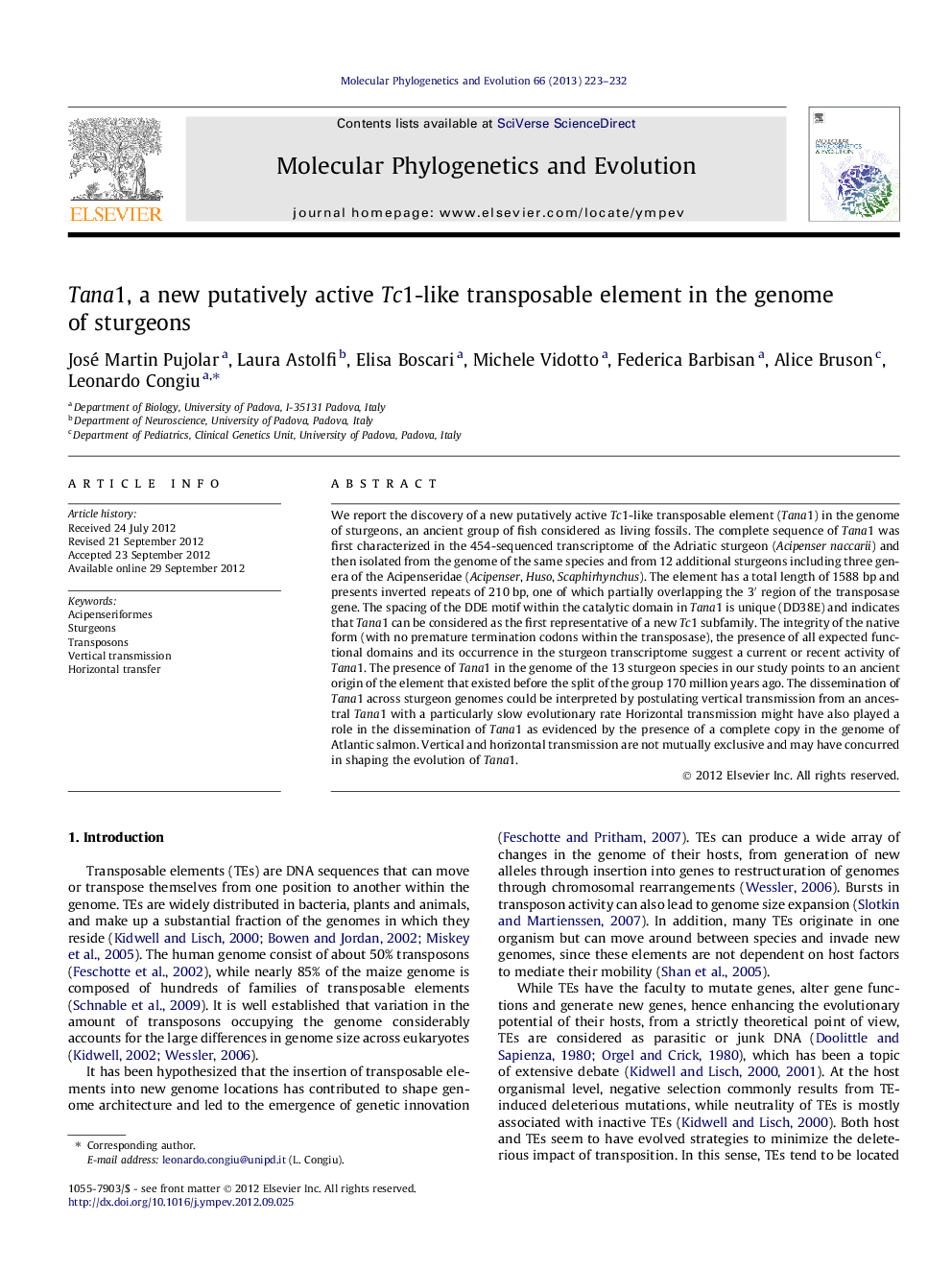| Article ID | Journal | Published Year | Pages | File Type |
|---|---|---|---|---|
| 5920001 | Molecular Phylogenetics and Evolution | 2013 | 10 Pages |
We report the discovery of a new putatively active Tc1-like transposable element (Tana1) in the genome of sturgeons, an ancient group of fish considered as living fossils. The complete sequence of Tana1 was first characterized in the 454-sequenced transcriptome of the Adriatic sturgeon (Acipenser naccarii) and then isolated from the genome of the same species and from 12 additional sturgeons including three genera of the Acipenseridae (Acipenser, Huso, Scaphirhynchus). The element has a total length of 1588Â bp and presents inverted repeats of 210Â bp, one of which partially overlapping the 3â² region of the transposase gene. The spacing of the DDE motif within the catalytic domain in Tana1 is unique (DD38E) and indicates that Tana1 can be considered as the first representative of a new Tc1 subfamily. The integrity of the native form (with no premature termination codons within the transposase), the presence of all expected functional domains and its occurrence in the sturgeon transcriptome suggest a current or recent activity of Tana1. The presence of Tana1 in the genome of the 13 sturgeon species in our study points to an ancient origin of the element that existed before the split of the group 170 million years ago. The dissemination of Tana1 across sturgeon genomes could be interpreted by postulating vertical transmission from an ancestral Tana1 with a particularly slow evolutionary rate Horizontal transmission might have also played a role in the dissemination of Tana1 as evidenced by the presence of a complete copy in the genome of Atlantic salmon. Vertical and horizontal transmission are not mutually exclusive and may have concurred in shaping the evolution of Tana1.
Graphical abstractDownload full-size imageHighlights⺠Discovery of a new putatively active Tc1-like transposable element (Tana1) in the genome of sturgeons. ⺠Tana1 can be considered as the first representative of a new Tc1 subfamily. ⺠Presence in 13 sturgeon species points to an ancient origin of the element that existed 170 million years ago. ⺠Vertical transmission as the more likely process of dissemination of Tana1 in sturgeons. ⺠The detection of the element in Atlantic salmon points to a possible horizontal transmission.
